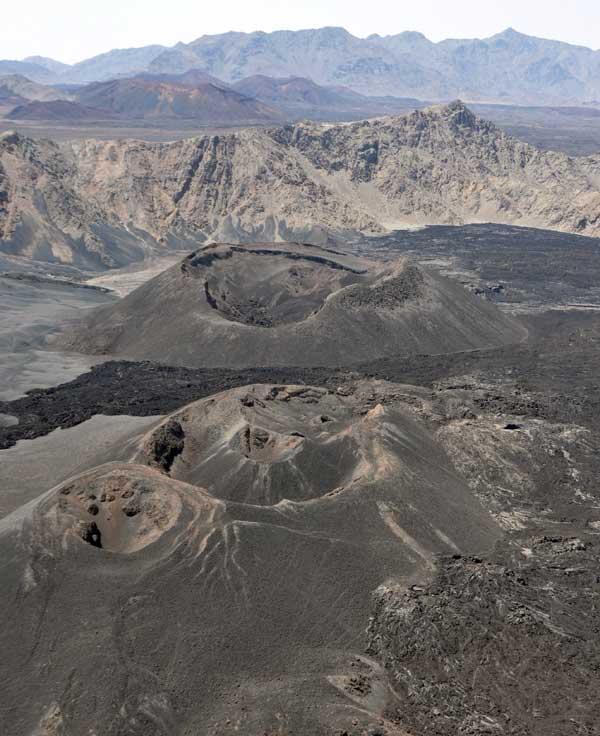Swarm of 30,000 Earthquakes Reveals Newfound Volcanic Potential


A swarm of thousands of earthquakes that struck the corner of Saudi Arabia nearest to Egypt in 2009 helped reveal that the area is unexpectedly volcanically active, scientists now report.
The seismic readings that researchers managed to collect from these quakes could help predict when volcanoes might erupt in the future, investigators added.
Scientists had largely thought northwest Saudi Arabia was quiet, geologically speaking. Few earthquakes and few volcanic eruptions have been recorded there in the past millennium.
However, between April and June 2009, more than 30,000 earthquakes struck an ancient lava field there named Harrat Lunayyir, with 19 earthquakes of magnitude 4 or greater striking at the swarm's peak on May 19, including a magnitude 5.4 quake that fractured walls in the town of Al Ays. Sensors even suggested that a volcanic eruption was possible. Alarmed, the Saudi Arabian government then evacuated 40,000 people from the region.
Part of Red Sea Parting
The lava field of Harrat Lunayyir is part of a "lava province" roughly 70,000 square miles (180,000 square kilometers) in size that began forming 30 million years ago when Arabia split from Africa, rifting that helped create the Red Sea . Harrat Lunayyir was previously considered inactive because of its location on the margins of the continental rift, nearly 120 miles (200 kilometers) away from the active center of spreading beneath the Red Sea.
Still, "the Red Sea rift is a very active place to start with, with a chain of volcanoes down the middle of it that we're rarely aware of because they are underwater," said researcher John Pallister, a volcanologist and chief of the U.S. Geological Survey's volcano disaster assistance program. "When continents are being pulled apart as you have there, you'll often see intrusions of magma on the shoulders of the rift."
Get the world’s most fascinating discoveries delivered straight to your inbox.
The researchers discovered a roughly 2-mile-long (3-km-long) rupture had opened up in the area and widened to 5 miles (8 km) long during the most powerful quake. Satellite radar images suggested the most likely cause of this fault was magma intruding upward over a 6-mile-long (10-km-long) stretch.
Based on these findings, on June 19, 2009, the researchers forecast a moderate chance of a volcanic eruption and a low probability of magnitude 5 or greater earthquakes in the two months following. A decline of seismic activity by August 2009 led the scientists to conclude the crisis had ended, allowing evacuees to return to their homes and daily lives.
Magma rises
Still, now that magma has risen to shallow levels roughly a mile (2 kilometers) below the surface of the Earth, eruptions remain possible, and the authorities have to remain vigilant, the researchers said.
"It is more likely that we'll get additional intrusions of magma and potentially even an eruption in this area the pathway is prepared," Pallister told Our Amazing Planet.
The highly detailed readings the Saudi Geological Survey collected from these quakes might be able to help scientists forecast volcanic eruptions in the future, Pallister added.
Volcanic quakes often generate a mix of high- and low-frequency seismic waves that could yield clues as to when an eruption might occur. These signals are often dulled by the nature of the earth they pass through, but when it came to the Arabian quakes, they were detected through the crystalline rocks of the area quite clearly. The low-frequency seismic waves detected during the quakes seemed to show magma flowing under the earth, while the high-frequency waves indicated fracturing of crystalline rocks as magma crept toward the surface.
"Understanding what these signals mean could prove instrumental to forecasting what can be deadly events worldwide," Pallister said.
The scientists detailed their findings online Sept. 26 in the journal Nature Geoscience.




